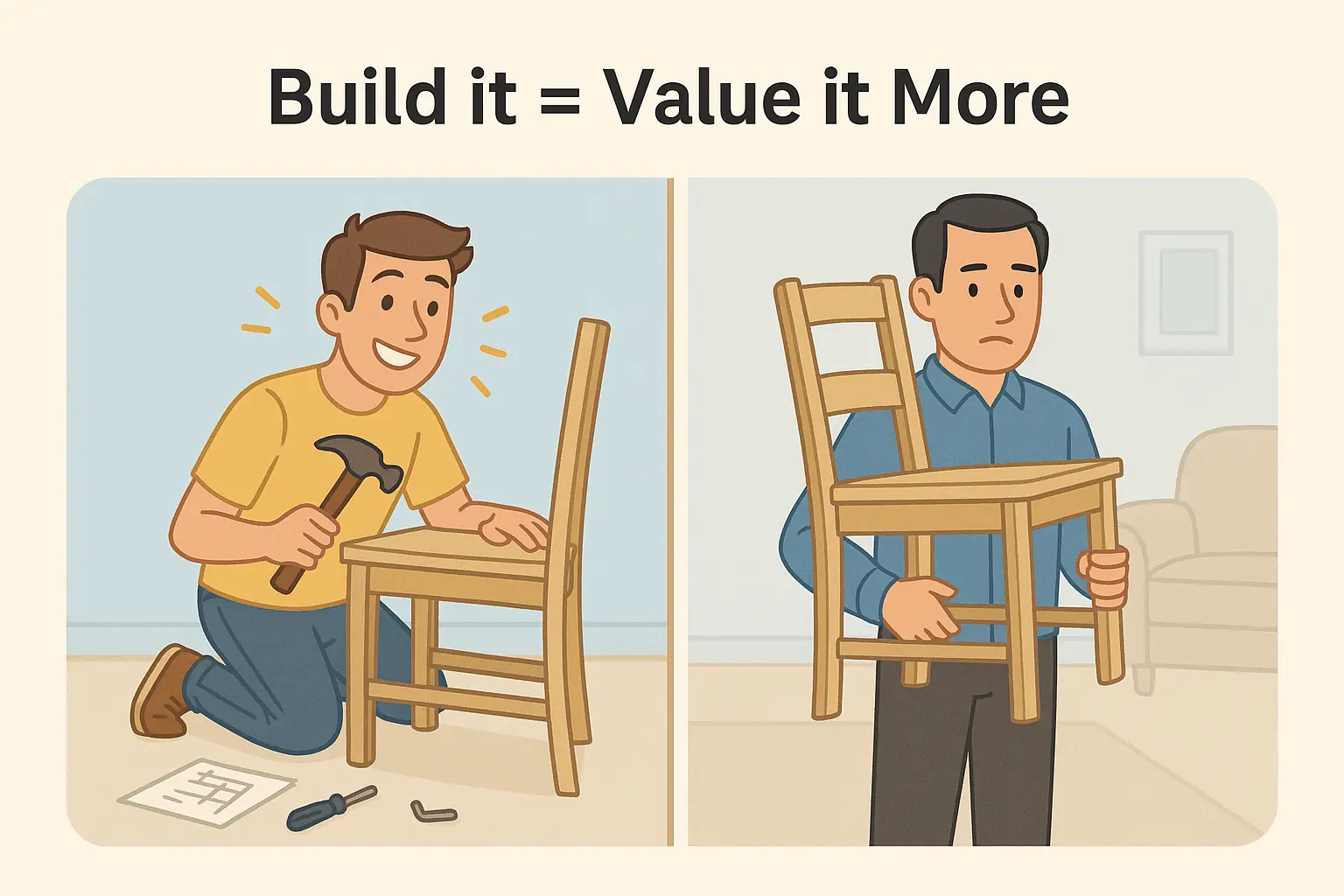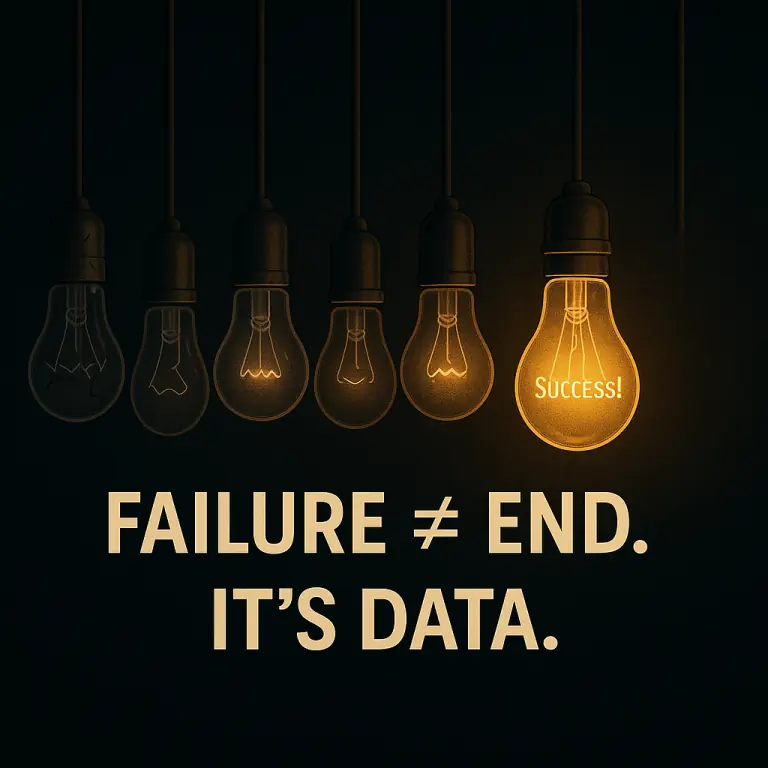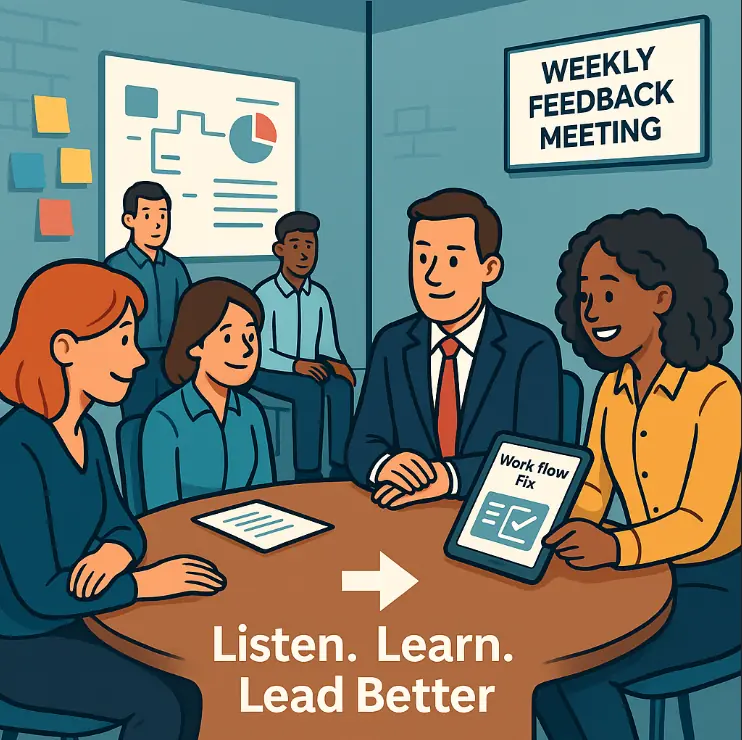
The IKEA Effect – Psychological Ownership at Work
Contents
If you have ever built something yourself, then you’ll know how good it feels.
That’s the IKEA effect.
It’s something that all managers should be aware of because it can make a significant difference to employee motivation.
What Is The IKEA Effect?
As Norton, Mochon & Ariely, put it in their 2012 paper, The IKEA Effect: When Labour Leads to Love.
It’s a simple summary for a complex psychological state of mind. The theory started after observing that people who put together IKEA furniture:
Were generally prouder of an item of furniture than those who just bought it.
The key difference is personal resources.
Creating a piece of furniture takes time, patience, tools, and perhaps even some craft skill. The finished piece is the result of your work.
It’s little wonder that people instinctively feel it is something to be proud of.
The same is true of any project which takes your resources: whether that’s time, money, or something else.
The moment you’re invested in a project or item, it means more to you.
Unfortunately, this can also mean you’re not keen to hear any negative comments. After all, no one likes to be told what they have created is rubbish.
This is why the IKEA effect is such a useful business principle.
Any project an employee feels invested in, becomes personal.
The IKEA effect can help them finish a project out of pride, determination, and personal investment.
It can also prevent them from being objective about the project, which can cause issues!
Trainer Insight: On our line manager courses, we see often leaders underestimate this!
When employees are allowed to shape part of a project themselves, they feel more invested and proud of the outcome.
Even more so than with financial rewards.
Why Ownership Matters At Work
Businesses with the highest rate of staff turnover are those which don’t fully engage with their staff.
In short, if you don’t work to make every member of staff part of the team, they’ll simply feel like a cog in a machine – easily replaceable.
That won’t help you get their best effort, and they are likely to leave for greener pastures.
However, when employees have a sense of responsibility and can be held accountable for their work, they will be more invested in what they’re doing.
This approach boosts morale, improves staff loyalty, and increases productivity.
It’s the IKEA effect, employees are invested in the outcome and want a project to do well.
Personally, I have experienced it on numerous occasions. In one case, a good receptionist was thinking about quitting.
I didn’t want to lose them, and offered them more money. This wasn’t enough to convince them.
Instead, they wanted to take on scheduling duties for the workforce. The job was handled by an overworked accounts processing clerk at the time.
I gave the receptionist a test run on a small section of the workforce.
Within a week, she had suggested various ways to streamline the process and saved the company a lot of money.
As a bonus, the accounts clerk had a lighter load and was happier.
Allowing her to oversee scheduling gave her accountability and responsibility. Instead of losing a member of staff, I gained two happier and more productive ones.
Interestingly, the two staff members became a united team and went on to do a lot more for the business.
Why? Because they were accountable? In part, yes, but mainly because they built on processes they created.
They were fully invested in their work.
Trainer Insight: We regularly remind managers that giving people responsibility isn’t about adding to their workload.
It’s about giving them a stake in success.
When staff see their ideas come to life, motivation soars, and loyalty follows.
Balancing Ownership With Objectivity
There is a downside to the IKEA effect in leadership and at all levels.
When you’re personally invested, it’s much harder to identify flaws and accept that there is a different, or better way of doing something.
Employees blinded by emotional attachment can be told to do it a different way and the reasons explained.
They may not be happy, but they will quickly see the logic to your decision.
As a manager, the IKEA effect can be more dangerous. There may be no one to override your bad decisions.
The strange thing is, you know the issue. It’s when you take criticism for your project personally and not objectively.
The only way to balance your emotional connection and objectivity is to step back.
Assess the project on a facts-only basis and compare it to the original goals.
You’ll quickly see if the project is performing as expected. If it isn’t, you should be able to see why and what it will take to correct it.
That tells you whether it’s worth continuing or not.
As a manager, calling time on a personal project can be difficult. However, employees will see that you’ve made the right decision.
That will encourage them to step forward with their own ideas.
Trainer Insight: A common pitfall we see in managers is taking criticism of a project personally.
The best leaders learn to separate themselves from the work, treat feedback as data, and adjust course when needed.
This role-modelling helps employees feel safer doing the same.
Practical Takeaways For Leaders
A good understanding of the IKEA effect can help you see when you or employees are too attached to a project.
However, the following can help you avoid becoming too attached in the first place.
Delegation
Use the IKEA effect to get more from your employees. Instead of delegating them a task, delegate them a problem.
They will have to spend time understanding the problem before they can create a solution. That makes them invested.
You also save time that you can spend being a manager.
Co-Creation
Co-creation is an excellent way to balance emotional connectivity and objectivity.
When a team create a process and final product between them, they all contribute.
They’ll still feel invested in the project outcome.
However, they’ll also be more open to changes, as they haven’t created every part of the project themselves.
Again, encouraging a team to create the solution is a real time-saver.
Constructive Feedback
Constructive feedback is essential to keep the project on the right path.
To keep motivation levels up, you should be tactful and specific.
Tell them all the bits that are working well, and which part isn’t.
You should also be appreciative of their efforts, while making suggestions as to how problem areas can be improved.
Your employee will be left feeling positive and ready to improve the project.
Don’t forget, it’s your job to keep an eye on the bigger picture and, if necessary, adjust the course of the project.
Conclusion
The IKEA effect can be used by leaders to boost the engagement of employees.
That will result in higher productivity levels, better motivated staff, and potentially a higher quality product.
The trick is to stay objective – it will help you keep the project on track.
You can make sure your employees are involved by giving them problems to solve and allowing the team to drive product creation.
All you need to do is record project goals and the expected timeline for a project.
This will help you stay objective and keep the project on track.
- Facebook: https://www.facebook.com/profile.php?id=100066814899655
- X (Twitter): https://twitter.com/AcuityTraining
- LinkedIn: https://www.linkedin.com/company/acuity-training/






